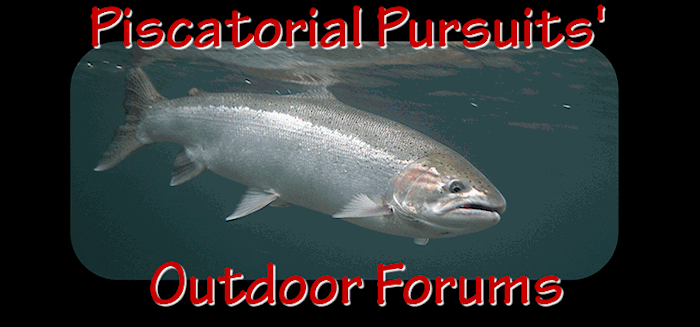Regardless of who's right in the "How much gas does a 2-stroke gas" quibble, anyone who thinks getting rid of the 2-strokes will make the problem go away is passing gas.
Does anyone actually think that use of the Kenai is likely to decline in the years ahead? Not a chance. Now there's no question the inefficient 2-strokes need to go, and to the degree they're eliminated over time, their contribution to hydrocarbon pollution will disappear.
On the other hand, if at the same time the horsepower limit is raised to 50, more hydrocarbons will enter the river. To claim that increased horsepower will not increase hydrocarbons is Brave New World Newspeak — "More is Less."
Add to that increased use of the Kenai by out-of-area Alaskans with now-legal 50-horsepower motors, increased area population, and increased commercial use, and we're not back where we started — we're much worse off.
Now the Feds are at the door. This pollution thing is not going to go away, and anyone who thinks getting rid of the 2-strokes solves the problems is greatly mistaken. Going to 50-horsepower is a bad, bad idea with ominous implications for the future. The 2-stroke solution is at best a very short term reprieve from a problem that's only going to get worse in the long term.
Alaskans have been here before, but are we any smarter? Alaskans could not resolve the rural preference issue because politics kept the question from being presented to the Alaskan people. Uncle Ted held the Feds off for a while, but in the end the Feds won, and Alaskans lost control of their resources.
Same thing obtains right now. Politics and special interests are pushing for a superficial, short-term fix by getting rid of old 2-strokes and raising the horsepower to 50. It won't work. The river will only become more polluted by bigger motors, increased use, and increased area development. Then one day the Feds will say, "Enough," and Alaskans will lose control of the Kenai. Special interests couldn't thumb their noses at ANILCA and special interests can't thumb their noses at the EPA and the Clean Water Act.
On the social level, getting rid of the 2-strokes, mostly mom-and-pop motors in one year rather than over a period of three or four years really puts the screws to folks who might not be able to shell out the bucks for a new engine. Simultaneously raising horsepower to 50, mostly if not exclusively, to benefit commercial users will only intensify the hostility felt by many toward that industry. Really bad press.
What needs be done is to get rid of the 2-strokes over time—gone by, say, 2010, keep horsepower limits where they are, and search for solutions that decrease current use patterns—smaller boats, fewer trips, lighter loads, etc. We simply can't continue to encourage a growth industry on and to the detriment of a finite resource.
Moeover to think that increased boat speeds will produce a safer fishery is, I thnk, wishful thinking that may come back to bite us. Surely a superficial examination of highway safety records will show that any increase in highway speed results in a proportionate increase in accidents. Can we honestly expect anything different from faster boats?
Habitat is being degraded by motorized angling activity and more. Using bigger motors may or may not slow down erosion, but how commendable is it to merely slow down abusive activity when to the degree than non-motorized use is increased, to that exact degree the habitat degradation caused by motors is entirely eliminated? Pandering to motorized use of the river is a pitiful substitute for doing the right thing, which is to reduce such activity.
Finally, many people are appalled at what they witness on the Kenai, viewing wholesale catch-and-release, combat fishing, and trophy hunting as an angling and social disgrace. Rather than attempting to continue to commercialize and develop an increasingly fragile Kenai River fishery, we should instead take a longer-term view, endeavoring instead to capitalize on the quality of the experience rather than sheer quantity.
Alaska Department of Natural Resources is receiving public comment on this issue until December 19th. Contact:
Chris Degernes
Chief of Field Operations
Division of Parks and Outdoor Recreation
550 W. Seventh Avenue, Suite 1380
Anchorage, AK 99501-3561
Fax 907-269-8907
E-mail Chris_Degernes@dnr.state.ak.us














 Previous Topic
Previous Topic Index
Index


